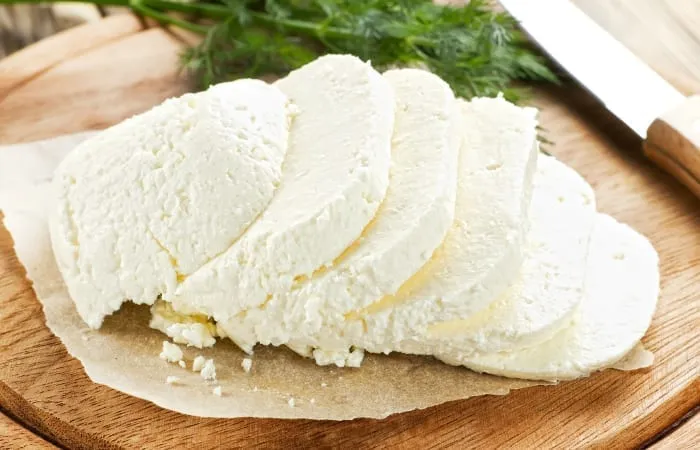Making cheese at home from milk is a delightful and rewarding experience that can transform your kitchen into a mini dairy. Whether you're a seasoned cook or a curious beginner, the art of cheese-making is accessible to anyone with a bit of patience and the right ingredients. In this post, we'll guide you through the simple steps to create your very own cheese at home. Get ready to impress your friends and family with your homemade cheese, and perhaps even discover a new favorite hobby!
Ingredients Needed

Before diving into the cheese-making process, it's essential to gather all the necessary ingredients. The type of cheese you want to make may dictate some of the specifics, but here's a general list for basic cheese-making:
- Milk: You can use whole cow's milk, goat's milk, or even sheep's milk. Aim for high-quality, preferably non-homogenized milk for the best flavor.
- Acid: This is usually vinegar or lemon juice, which helps to curdle the milk. White vinegar is a popular choice, but feel free to experiment with apple cider vinegar or fresh lemon juice.
- Salt: This is crucial for flavor and preservation. Use non-iodized salt, such as kosher or sea salt. Adjust the quantity based on your taste preference.
- Rennet (optional): If you want to make a firmer cheese, consider adding rennet, which is an enzyme that helps curdle the milk. It can be found in liquid or tablet form in specialty stores or online.
- Herbs and Spices (optional): Feel free to customize your cheese with various herbs, spices, or even garlic for extra flavor!
With these ingredients in hand, you're all set to embark on your cheese-making adventure. The process may seem daunting at first, but with a little practice, you'll be crafting delicious cheese that you can enjoy and share!
Also Read This: Can I Redownload Images from iStock and Retrieve My Purchased Files
3. Equipment Required

If you're eager to embark on your cheese-making adventure, gathering the right equipment is essential. Here's a handy list of what you'll need:
- Large Pot: A sturdy pot, ideally stainless steel, is perfect for heating the milk. Make sure it has a heavy bottom to prevent scorching.
- Thermometer: A good kitchen thermometer is crucial for monitoring the temperature of the milk accurately.
- Cheesecloth: This fine mesh cloth is vital for straining the curds from the whey. You can find it in most kitchen supply stores.
- Slotted Spoon: A slotted spoon will help you stir the milk and later scoop out the curds.
- Large Bowl: You’ll need a bowl to catch the whey when you strain the curds.
- Cheese Mold (Optional): If you plan on making pressed cheese, a cheese mold will help shape your cheese.
- pH Strips (Optional): These can help you monitor the acidity level if you're getting serious about cheese making.
- Storage Containers: Airtight containers are great for storing your finished cheese. Consider glass or food-grade plastic.
With these tools in hand, you're well on your way to making delicious cheese at home. Just remember, cleanliness is key in cheese making, so be sure to sanitize your equipment before you start!
Also Read This: Why 123RF Is a Great Platform for Royalty-Free Music
4. Step-by-Step Instructions
Now that you've got your equipment ready, let’s dive into the step-by-step process of making cheese at home. Follow these simple instructions to create your own delicious cheese!
- Heat the Milk: Pour your milk into the large pot and slowly heat it over medium-low heat. Stir occasionally to prevent scorching. Aim to reach about 190°F (88°C).
- Add Acid: Once the milk is hot, remove it from the heat and add your acid (like lemon juice or vinegar). Stir gently for a minute. You'll see curds forming.
- Let it Sit: Cover the pot and let it sit for about 10-15 minutes. This allows the curds to fully form.
- Strain the Curds: Line a colander with cheesecloth and pour the curds and whey into it. Let the whey drain for about 30 minutes.
- Rinse and Squeeze: Rinse the curds under cold water to remove any residual whey. Gather the cloth and squeeze out the excess moisture.
- Season: If desired, mix in salt or any herbs and spices for flavor. This is your chance to get creative!
- Mold and Press (Optional): If you’re making a firmer cheese, transfer the curds to your cheese mold. Press down to shape and compact the cheese.
- Age (Optional): Depending on the type of cheese, you may want to age it for a few days to weeks in a cool place.
- Enjoy: Once your cheese is ready, slice, spread, or crumble it however you like. Enjoy your homemade creation!
And there you have it! Making cheese at home can be a fun and rewarding experience. Don’t be afraid to experiment and find out what flavors and textures you love most!
Also Read This: Can You Get Shadowbanned on YouTube?
Common Mistakes to Avoid
Making cheese at home can be a rewarding experience, but there are a few common pitfalls that beginners often encounter. Avoiding these mistakes can help you achieve better results and enjoy the process even more!
- Using the Wrong Milk: Not all milk is created equal! Always opt for whole milk without additives. Avoid ultra-pasteurized milk, as it can hinder the curd formation.
- Skipping the Thermometer: Temperature control is crucial in cheese-making. Skipping the thermometer can lead to curds that are either too soft or too tough. Invest in a good kitchen thermometer!
- Ignoring Cleanliness: Sanitation is key. Make sure all your tools and surfaces are thoroughly cleaned to prevent unwanted bacteria from ruining your cheese.
- Rushing the Process: Cheese-making is an art that takes time. Rushing through steps can lead to poor results. Patience is your best friend here!
- Not Following the Recipe: Each type of cheese has its own unique recipe. Deviating from the instructions, especially with ingredients or timing, can lead to disappointing results.
- Over-Agitation: When stirring curds, be gentle! Over-agitation can break the curds too much, leading to a grainy texture in the final product.
Also Read This: Create a Jeopardy Game with Canva Jeopardy Template
Tips for Perfect Cheese
If you're looking to elevate your cheese-making game, here are some handy tips that can help you produce a perfect batch every time!
- Choose Quality Ingredients: Start with high-quality milk and cultures. Organic or locally-sourced milk can make a big difference in flavor.
- Maintain a Consistent Temperature: Create a warm, draft-free environment for your cheese. A consistent temperature helps achieve the right texture and flavor.
- Practice Patience: Allow your cheese to age properly. Aging can enhance flavors and textures, so don't rush it!
- Experiment with Flavors: Once you feel comfortable with the basics, try adding herbs, spices, or even infused oils to your cheese for a unique twist.
- Keep a Cheese Journal: Document your process, noting what worked and what didn’t. This will help you refine your technique and discover your personal cheese-making style.
- Ask for Feedback: Share your creations with friends and family. Their feedback can be invaluable in improving your cheese-making skills!
How to Make Cheese at Home from Milk
Making cheese at home is a rewarding and delicious endeavor that you can enjoy with family and friends. With just a few ingredients, you can transform simple milk into a variety of cheeses. Here’s a step-by-step guide to help you get started!
Ingredients You Will Need
- Milk (whole or 2% recommended)
- White vinegar or lemon juice
- Salt
- Optional: herbs and spices for flavoring
Equipment Required
- Large pot
- Thermometer
- Slotted spoon
- Cheesecloth or fine strainer
- Container for storing cheese
Step-by-Step Instructions
- Heat the Milk: Pour your milk into a large pot and slowly heat it over medium heat, stirring occasionally.
- Add Acid: Once the milk reaches about 190°F (88°C), add 1/4 cup of white vinegar or lemon juice. Stir gently until curds form.
- Separate Curds and Whey: Remove from heat and let sit for 10 minutes. Using a slotted spoon, scoop out the curds into a cheesecloth-lined strainer.
- Rinse and Season: Rinse the curds under cold water to remove any residual whey. Then, sprinkle with salt and mix in any herbs or spices if desired.
- Press and Store: Gather the cheesecloth and press out excess moisture. Shape the cheese into a ball or pack it into a container and refrigerate.
Tips for Success
| Tip | Details |
|---|---|
| Use Fresh Milk | Fresh, high-quality milk yields the best results. |
| Experiment with Flavors | Try different herbs and spices to create unique flavors. |
| Practice Patience | Cheese making can take time; don’t rush the process! |
In conclusion, making cheese at home is a simple yet fulfilling process that allows you to appreciate the art of cheese-making. With practice and creativity, you can enjoy fresh, homemade cheese tailored to your taste preferences.